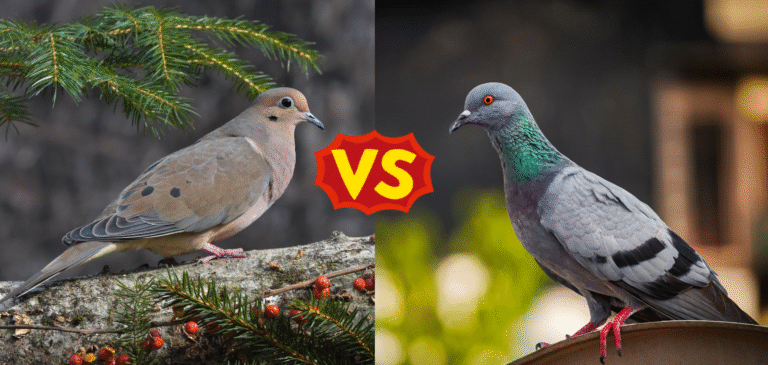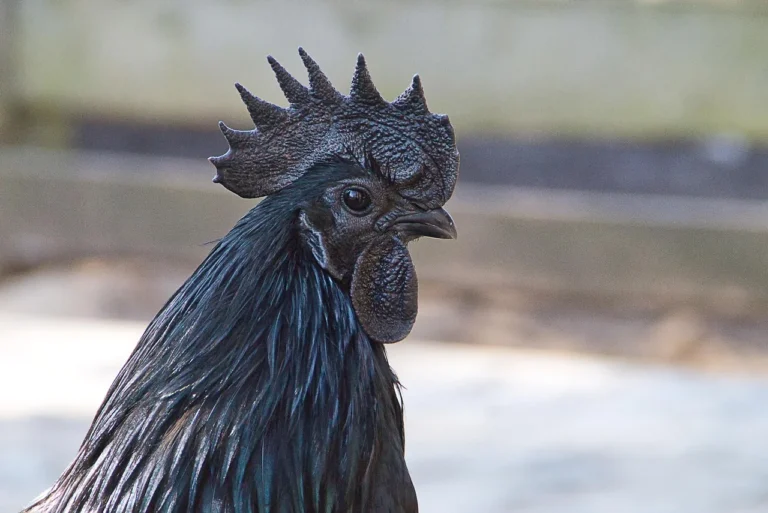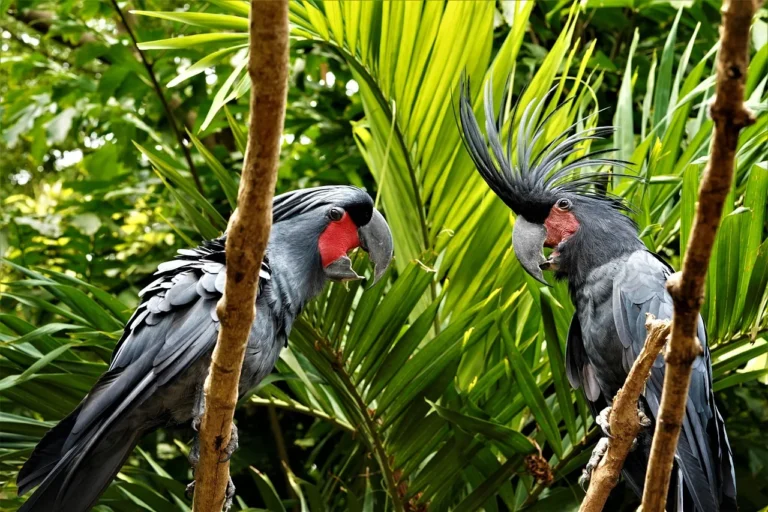There’s a breed of chicken that’s completely black, we mean pitch black. Surprised? You should be, as you might not have seen or heard about ayam cemani chicken before. From feathers to skin, meat, and even bones, for this amazing bird, everything is black. In fact, it’s a gothic masterpiece of nature. Whether you’re a birdwatcher or a poultry enthusiast, these stunning birds will grab your attention at first sight.
You might’ve spent years watching and studying different birds, but believe us, nothing will compare to your first encounter with ayam cemani chicken. Their mysterious aura and striking appearance stop people in their tracks. Native to Indonesia, these birds carry centuries of fascinating history and cultural significance. Want to gain more insights about this remarkable creature? Read on, then.
Today, we’ll discuss everything about this extraordinary bird.
Origins and History
The island of Java, Indonesia, serves as home to ayam cemani. This is where the story of this black chicken began when local farmers first bred these birds centuries ago. Since then, Javanese have been using this bird for many purposes, including farming, traditional rituals, spiritual ceremonies, and even as a symbol of wealth and power. It’s all because of the mystical appearance and cultural significance of the bird.
However, it didn’t reach Western stores until the late 20th century. Dutch colonists first documented them in the 1920s, but they remained relatively unknown outside Southeast Asia for decades. The breed’s name comes from the village of Cemani in central Java. It is where they first gained recognition. Today, bird enthusiasts worldwide seek them out for their striking beauty and historical significance.
Physical Characteristics and Appearance
Did you know that ayam cemani chicken is nicknamed the “Lamborghini of poultry,” due to its distinguished appearance. Nothing can prepare you for seeing this splendid bird up close. Look at the following table to learn more about its physical characteristics and appearance:
| Characteristic | Description |
| OverallColor | Entirely black (feathers, skin, beak, comb, wattles, internal organs) |
| Feathers | Glossy black with a metallic green/purple sheen |
| Comb Type | Single comb, black in color, 5 well-defined points |
| Wattles & Earlobes | Black, small to medium in size |
| Eyes | Very dark brown to black |
| Beak | Short, strong, and black |
| Legs & Feet | Black legs with slate or dark gray scales and black toes |
| Skin | Completely black |
| Body Shape | Medium-sized, well-proportioned, upright posture |
| Tail | Moderately long, well-curved sickle feathers in roosters |
| Wings | Tight and strong, held close to the body |
| Egg Color | Cream-colored (not black) |
| Rooster Weight | 2–2.5 kg |
| Hen Weight | 1.5–2 kg |
Temperament and Behavior
They might have a mysterious and intimidating personality. But it doesn’t necessarily mean that their appearance reflects their personality. In fact, ayam cemani chickens exhibit a curious and friendly nature. They are quite sociable with humans who raise them. These birds adapt well to backyard settings, though they might need time to warm up to you. They’re active foragers and enjoy scratching around for insects and seeds. Many owners describe them as alert but not flighty or aggressive.
In a mixed flock, you’ll find an ayam cemani in the middle of the pecking order. They can live peacefully with other chickens, but like to do their own thing. Their proud walk and upright stance make them interesting to watch as they roam around the yard. For birdwatchers interested in distinctive domestic species, the ayam cemani offers unique behavior patterns worth observing. They tend to be less vocal than other chickens. It’s another reason they make good neighbors.
Egg Laying and Reproduction
Wondering about Ayam Cemani chicken eggs? Despite their black bodies, these hens lay cream-colored eggs with a slight pink tint, not black as many people expect! Hens typically produce 80-100 eggs yearly, making them moderate layers compared to commercial breeds. Their eggs appear slightly smaller than standard chicken eggs but taste just as delicious.
Breeding pure Ayam Cemani chickens presents real challenges. The gene for complete blackness doesn’t always pass fully to offspring. Many chicks show small white spots on their feathers, disqualifying them as “pure” specimens. Hens rarely go broody, meaning they don’t often sit on eggs to hatch them naturally. Most breeders use incubators to hatch ayam cemani eggs, with hatching rates lower than average. Each successful chick feels like a small miracle.
Care and Management Tips
You can follow guidelines similar to those of other breeds when caring for ayam cemani. There are a few exceptions, though. Remember, they thrive in clean, dry coops with good ventilation and protection from predators. Here are some more ayam cemani care and management tips:
Housing & Space
- Allow at least 4 square feet per bird inside the coop
- Provide a secure outdoor run with space to roam
- Ensure a predator-proof environment, especially at night
- Use soft bedding like straw or wood shavings
- Clean their coop regularly to avoid disease
Feeding
- Offer a balanced poultry feed with 16–18% protein for adult birds
- Supplement their diet with grains, fruits, vegetables, and occasional mealworms
- Ensure constant access to clean, fresh water
- Add grit or crushed oyster shells to aid digestion and eggshell strength
- Avoid junk food, salty, or sugary items
Egg Laying
- Provide clean nesting boxes with soft bedding
- Keep nesting boxes in a shaded, low-traffic area
- Keep stress low to maintain healthy egg production
- Collect eggs daily to maintain hygiene and prevent breakage
Availability and Pricing
If you’re thinking about buying an ayam cemani chicken, prepare for sticker shock! Pure specimens command prices between $200-$500 per bird. Some exceptional breeding pairs sell for thousands of dollars. Why so expensive? Their rarity, difficulty in breeding true black specimens, and growing popularity drive prices up. Many sellers claiming to offer ayam cemani actually sell crossbreeds with incomplete black features.
When searching for ayam cemani chicken for sale, look for reputable breeders with excellent reviews and documentation. Ask for photos of the parents and request certification of breeding. Legitimate breeders will answer questions about their birds’ lineage and care history. Compared to regular chickens costing $3-$20 each, ayam cemani represents a serious investment. Think of them more as exotic pets than typical farm birds.
Myths and Misconceptions
The striking appearance of ayam cemani chickens has inspired countless myths. Some believe their meat has magical healing properties or brings special luck to owners. Others claim drinking their blood grants spiritual powers. Let’s set the record straight: while ayam cemani chicken meat appears strikingly black, it tastes similar to regular chicken. No scientific evidence supports claims about special healing properties, though the meat contains slightly higher levels of certain minerals.
Is the Ayam Cemani Right for You?
Before bringing home an ayam cemani chicken, consider your goals and capabilities. These birds make better show specimens or conversation pieces than practical farm animals. If you want productive egg layers or meat birds, other breeds offer better returns on investment. The ideal ayam cemani owner appreciates their historical and aesthetic value. They’re perfect for serious collectors, exhibition breeders, or hobbyists fascinated by rare poultry genetics.
Consider these pros and cons:
Pros
- Stunning, unique appearance
- Moderate temperament
- Good conversation starter
- Potential breeding value
Cons
- High initial cost
- Average egg production
- Breeding challenges
- Special care requirements
Final Thoughts on the Mysterious Ayam Cemani
The allure of the ayam cemani extends beyond its striking appearance. These fascinating birds carry centuries of cultural history and genetic uniqueness that appeal to bird enthusiasts worldwide. Whether you’re considering adding them to your flock or simply appreciating their beauty from afar, ayam cemani chickens represent one of nature’s most remarkable creations. Their complete blackness reminds us of the wonderful diversity within the bird world.
Keep visiting our blog if you want to learn more about our beautiful feathered friends and birdwatching.



